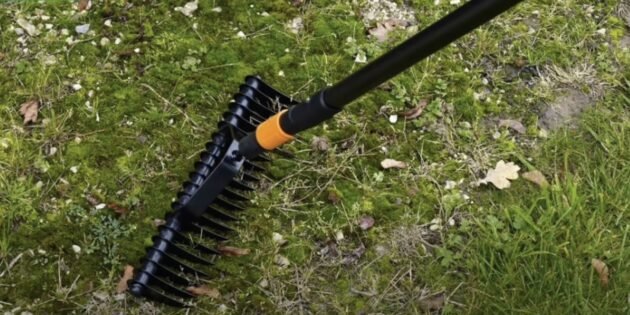Moss grows on the surface of the soil, gradually covering it with a carpet. The green cover retains moisture in the soil and does not allow oxygen to penetrate into it, and this has a bad effect on the root system of other plants. If you do not fight with moss, the land on the site may become poor and unsuitable for growing useful crops. And the moist fluffy structure of the spores becomes home to pathogens of fungal diseases, which subsequently attack the garden and vegetable garden.
Moss can appear on the site for various reasons:

This is the fastest way to get rid of unwanted vegetation. Moss can be "scraped" from the ground with a shovel, rake, hoe or garden planer, and then collected and sent to the trash.
After the procedure, carefully loosen the ground, and then mulch it by pouring dry peat, sawdust, mown grass or fallen leaves with a layer of at least 5 cm. Such a "blanket" will protect the soil from light, and the remains of moss and its spores will not be able to grow again.
It is necessary to carry out such treatment in dry weather. It is desirable that there is no rain for the next day.
Carefully dilute 50 g of copper sulfate in 10 liters of water or 120 g of iron sulfate in 15 liters of water. Pour the prepared solution liberally over the areas where there is moss. The liquid should fall directly on unwanted vegetation. After about 5 days, the moss will begin to darken and die off.
As a rule, it is not possible to destroy all the spores from the first time. Therefore, 2 weeks after the first procedure, repeat it. But this time you can only take a solution of iron vitriol.
By the way, both solutions are used for treatment of the garden and vegetable garden from diseases, so they will not harm other plants.
Since moss likes to settle on acidic soils, you can make them more neutral. In the new conditions, it will not be able to develop normally and, most likely, will disappear by itself.
Carry out the procedure in dry weather and make sure that the forecasts do not promise rain in the next day. So the remedy will have time to act.
Scatter slaked lime or dolomite flour over the soil surface at the rate of 0.5 kg of the product per 1 m2. Dig up the soil for half a piece of shovel. You can also mix slaked lime with sand in equal proportions and generously sprinkle this mixture on places affected by moss.
Since these products make the soil neutral, do not use them near crops that like acidic soil. Among them, for example, hydrangea, juniper, rhododendron, peony, blueberry and dogwood.
In shops and garden centers, you can find special means to combat moss. Most often they are available in the form of sprays. With their help, you can get rid of moss on garden paths , in the seams between tiles, on the facades of buildings, on roofs, garden furniture or sculptures.
The principle of action of the drugs is similar — it is enough to spray them abundantly with spores. Try not to fall on other cultures, so as not to harm them. The exposure time may vary depending on the manufacturer. But, as a rule, moss dies after a few hours.
Before using chemicals, do not forget to wear gloves, glasses and a protective mask, so as not to spoil your health.
If water stagnates on your site and moss grows due to waterlogged soil, the fight against harmful vegetation will only be a temporary measure. Most likely, in order to solve the problem, it will be necessary to equip drainage ditches around the perimeter of the territory.
If you notice that moss grows in a poorly lit place, try to eliminate the source of the shadow. Of course, the demolition of buildings is too radical a measure. But everyone can put things in order in the garden. First of all, carry out sanitary and rejuvenating pruning of trees and shrubs. Remove old, diseased, broken branches, as well as those that create a lot of shade in the garden. If the plants are planted too thickly, it may be worth getting rid of some of them altogether.